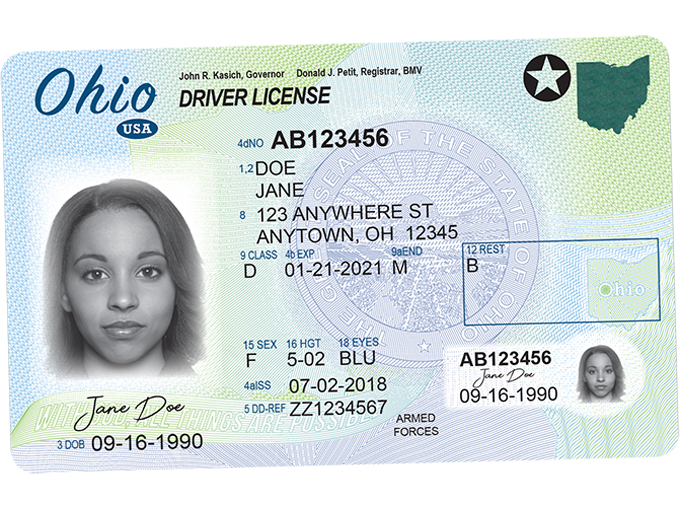
While driver’s licenses originated as a means to promote and advance public safety and security, they have since taken on a more complicated role.
Today’s driver’s licenses represent more than just the physical proof of the qualification to operate a motor vehicle.
In many countries driver’s licenses also serve as a primary government-issued form of identification and age verification, and as such, any forgery of a driver’s license must be understood as a significant criminal act.
Towards that end Ohio Bureau of Motor Vehicles (BMV), a division of the Ohio Department of Public Safety has provided Veridos, a world-leading identity solutions provider, with a new contract to provide the state with new driver licenses and ID cards.

Under this new contract, the annual production of more than three million cards will be created at a secure, local issuance facility in Ohio.
The change from an over-the-counter issuance process, to a central issuance model which includes advanced security features promotes security for all Ohio residents.
The innovative new Ohio driver license complies with Real ID* and can be used as identification at all U.S. airports and federal facilities.
“We are very pleased to have been selected by the Ohio BMV for the new driver licenses and ID cards that stand for optimum quality and utmost security”, explains Paul Mazzeo, President of Veridos America.

“The cards are made of polycarbonate, a material that guarantees robustness and high durability.
“They are equipped with state-of-the-art security features. For example, bearer-related data is laser engraved into multiple layers of the card material.”
“That delivers unequaled protection against manipulation, deterioration and counterfeiting.”
Additionally, three photographs of the card’s holder are embedded:
-
The primary black and white photograph on the front of the card is embedded using laser engraving technology.
-
The secondary photo is also black and white and is laser engraved into a lenticular lens making it viewable depending upon the card tilt direction.
-
The third photograph is a small color photo on the back of the card.
Highest photo quality has been achieved through the statewide deployment of new photo capture hardware and software.
Advanced security features are a straightforward way to enhance public trust in the credibility of these everyday documents.
The deployment took place at 186 Deputy Registrar offices throughout the state of Ohio in a single weekend.
The set-up guarantees photos that comply with standards not only by AAMVA, the key standardization organization for driver’s licenses in the U.S., but also by the International Civil Aviation Organization (ICAO), the U.N. agency for cross-border identification.
Wide range of materials, security features and operation systems
Veridos also provides the latest technologies for the enhancement of (electronic) driving licenses into more secure and trustworthy documents.

The company benefits from the vast production experience in security printing and ID cards from its parent companies Giesecke & Devrient and Bundesdruckerei.
Its solutions inherently include the choice between a wide range of materials, security features and operating systems.
To prevent those choices from becoming overwhelming, the company supports its customers through the entire switchover process, from revised enrollment and issuance procedures to the development of mobile services that provide further convenience and better user experience on mobile devices.
The federal REAL ID Act was passed in response to the events of 9/11 and establishes minimum security standards for license issuance and production, and prohibits Federal agencies from accepting for certain purposes driver’s licenses and identification cards from states not meeting the Act’s minimum standards.
New federal travel restrictions requiring secure identification go into effect October 2020.
(Learn More. Congress passed the Real ID Act in 2005. The law sets new validity requirements for state driver’s licenses. Courtesy of Newsy and YouTube. Posted on Dec 21, 2016.)


















